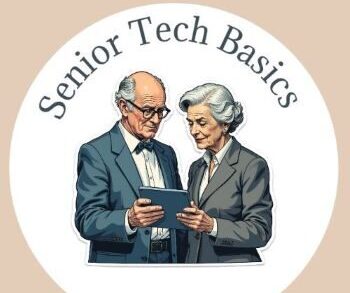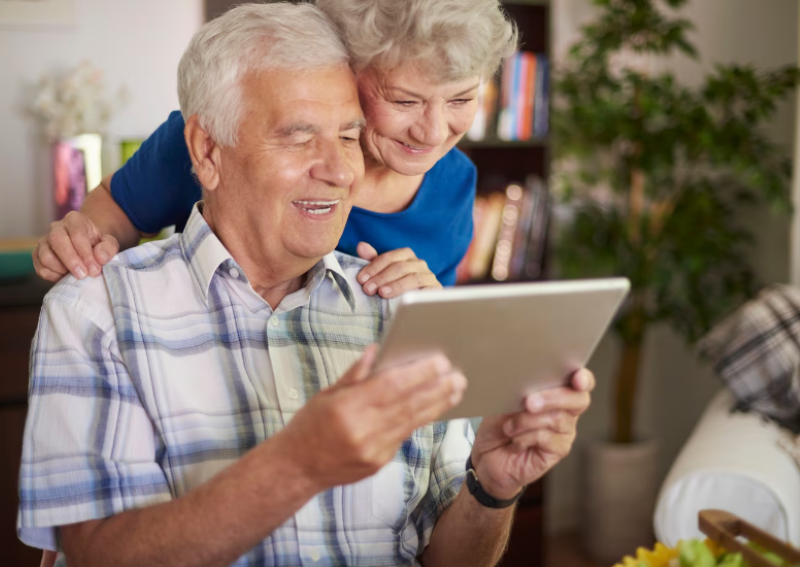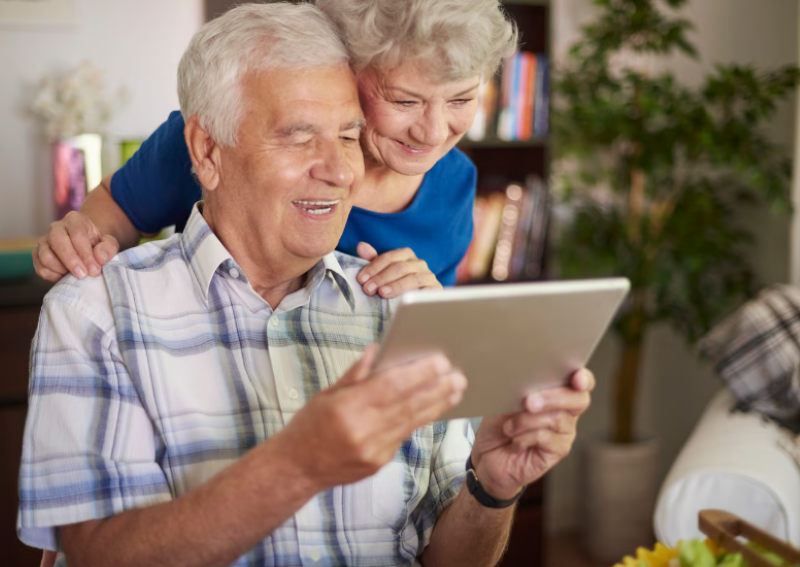
Chronic conditions like diabetes, high blood pressure, arthritis, or COPD can overwhelm you at times if you suffer from one or a few of them. You need to remember the prescribed medications, track symptoms with doctor visits, and often have days that feel anything but routine.
Still, modern mobile health apps (mHealth apps) empower you to manage your health from home straightforwardly.
From logging your symptoms to reminding you to take your medication or sharing your progress with your doctor, the right app can help in your wellness journey without requiring technical expertise.
In this guide, we will walk you through:
- How mHealth apps work.
- The conditions they can help you manage.
- The ideal ones for common chronic conditions.
- And how to use them safely and confidently as a newbie to health technology.
Why Use a Health App for Chronic Disease?
Managing chronic conditions requires consistency, awareness, and daily effort. Still, you won’t necessarily need piles of notebooks, missed doses, or trying to remember symptoms from last week with the use of health apps.
The right app can help make things easier, more organized, and less stressful, whether you live independently, rely on a caregiver, or see multiple specialists.
Health Apps Key Benefits.
Daily Tracking Made Simple – Many health apps help you log your blood pressure, blood sugar, pain levels, or medication doses quickly and automatically. They can even generate charts that enable you and your doctor to spot trends over time.
Medication and Appointments Reminders – Health apps help prevent missed doses and keep your care plan on track. You can, for example, set alerts for pills, meals, doctor visits, and physical therapy.
Better Communication with Your Doctor – Some apps allow you to export your data or securely share it with your healthcare team, making appointments more productive and personalized.
Instant Access to Trusted Health Info – Many apps also offer condition-specific education, tips, and videos to help you better understand your symptoms and treatment.
Improved Confidence and Independence – Knowing that you monitor your health daily without relying on memory or paper notes can give you peace of mind and a greater sense of control.
According to the Journal of Medical Internet Research, people with chronic illness who use tracking apps are more likely to follow treatment plans and report improved outcomes.
What Can Health Apps Help You Do?
Managing high blood pressure, diabetes, arthritis, and other chronic diseases requires more than medication. That’s where health apps come in to help you keep your health organized, stay consistent with your care plan, and communicate better with your doctor.
These tools’ essentail benefits include:
Track Your Health Data in Real Time.
mHealth apps typically allow you to log and monitor key health stats daily to avoid relying on memory or paper notebooks.
They can track the following:
- Blood pressure monitoring allows for viewing trends at home.
- Blood sugar or glucose for log fasting and post-meal values for diabetes.
- Oxygen levels measurement for individuals with COPD or heart conditions.
- Rate daily discomfort for arthritis or fibromyalgia.
- Helping to manage weight and physical activity.
Related Content: A Senior’s Guide to Using Online Mental Health Resources.
Set Up Medication and Appointment Reminders.
Forget taking medication or missing an appointment is easy, especially as an older adult managing multiple prescriptions or specialists, unless you use the right tools to assist you.
Your health app can, for example, help to:
- Set custom alerts for medication doses in the morning, evening, and before meals.
- Get notifications for refills or upcoming doctor visits.
- Track whether you have taken or skipped doses.
Check Your Progress with Easy-to-Read Charts.
Health apps can also turn your data into color-coded graphs or charts to spot a wide range of patterns.
Visuals make your condition more understandable and turn your daily logs into meaningful health decisions.
- Blood pressure graphs help your doctor to adjust the timing of medication.
- A blood sugar log can reveal higher readings after certain meals, giving you insight into your diet.
Health Education.
Education empowers you to make confident decisions about your health without relying solely on rushed appointments.
You can access the following specific information:
- Short videos explaining your illness.
- Tips on nutrition, exercise, and symptom relief.
- FAQs and evidence-based articles written in plain language.
Reports Sharing.
Several apps enable you to export your health data or sync with a patient portal to your doctor and caregiver, making visits more productive.
You can, for example:
- Bring printed reports to your next appointment.
- Send weekly progress summaries to your provider.
- Let a caregiver access your app to help monitor changes.
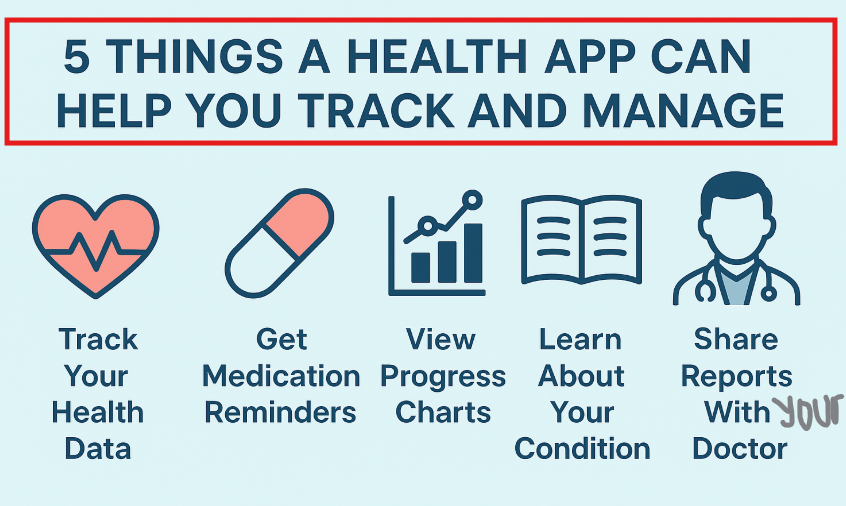
Top-Rated Apps for Seniors with Chronic Conditions.
Choosing the correct app for your personal health needs typically makes daily tracking easier and more relevant.
Below are the four common chronic conditions and the matching mobile apps.
Monitor Blood Sugar and Meal Habits ( For Diabetes).
Diabetes apps can help you track blood glucose, log meals, and even count carbohydrates to stay on top of daily care.
Features to look for:
- Glucose logging with time-stamped entries.
- Carb and insulin tracking.
- Printable blood sugar reports for your doctor.
- Syncing with devices like glucometers or CGMs for continuous glucose monitoring.
Popular apps:
- mySugr features an intuitive design to connect with Accu-Chek devices.
- Glucose Buddy has strong logging and analytics features, and integrates with Apple Health.
Track and Graph Your Readings (For Hypetension).
Hypertension apps help to log your blood pressure, spot trends, and set reminders for medication or lifestyle goals.
Features to look for:
- Manual or Bluetooth-enabled BP entry.
- Graphs to visualize fluctuations over time.
- Reminders to take pressure readings.
- Lifestyle tips for low-sodium diets and walking goals.
Popular apps:
- SmartBP allows sharing BP logs with doctors.
- Omron Connect for use with Omron BP monitors; simple UI.
Related Content: How Can Smartwatches Measure Blood Pressure?
Monitor Breathing and Triggers (For COPD or Respiratory Issues).
Apps for chronic obstructive pulmonary disease (COPD) help users track symptoms, monitor inhaler use, and even get alerts for air quality.
Features to look for:
- Symptom journal (shortness of breath, fatigue)
- Peak flow tracking
- Medication or inhaler usage logs
- Weather/pollution alerts for asthma/COPD triggers
Popular apps:
- Propeller connectible to inhalers and sends reports to providers.
- myCOPD offers personalized plans, rehab support, and breathing exercise videos.
Log Pain Levels and Track Triggers (For Arthritis and Chronic Pain).
Pain management apps help users log discomfort, identify triggers, and prepare detailed reports for healthcare providers.
Features to look for:
- Pain intensity sliders or diagrams.
- Daily impact and mood logging.
- Notes on flare-up triggers or weather effects.
- Tips for gentle stretching, diet, or joint care.
Popular apps:
- MyPainDiary features highly customizable logs essentail for doctor visits.
- Pathways Pain Relief combines pain tracking with CBT and guided meditation.
Tip: Seniors should use one well-matched app rather than juggling multiple tools.
| Condition | What the Apps Do | Features to Look For | Topular Apps |
| Diabetes | Track blood sugar, log meals, and manage insulin or carb intake | -Glucose logging with timestamps -Carb & insulin tracking -Printable blood sugar reports -Sync with glucometers or CGMs | mySugr, Glucose Buddy |
| High Blood Pressure (Hypertension) | Record BP readings, visualize trends, and set lifestyle reminders | -Manual/Bluetooth BP entry -Visual trend graphs -Daily reminders -Diet and walking tips | SmartBP, Omron Connect |
| COPD / Respiratory Conditions | Monitor symptoms, inhaler use, and air quality alerts | -Symptom journaling (e.g., breathlessness) -Peak flow tracking -Inhaler usage logs -Air quality or pollution alerts | Propeller, myCOPD |
| Arthritis / Chronic Pain | Track pain levels, triggers, and manage daily discomfort | -Pain diagrams and sliders -Mood and impact logs -Trigger/weather notes -Stretching, joint care, and wellness guidance | MyPainDiary, Pathways Pain Relief |
How to Choose a Safe and Reliable Health App?
Choosing the appropriate health apps for chronic disease management is essential, given that some may have poor security, confusing designs, or even misleading health claims.
Check the Developer’s Credibility.
Always check who created the apps; the reliable ones are often developed by:
- Hospitals, universities, or nonprofit health organizations.
- Government agencies (e.g., NHS, CDC).
- Recognized medical companies, such as Omron or Abbott.
The Federal Trade Commission ( FTC) provides a clear explanation of how it regulates specific health apps to safeguard consumers.
Look for clear privacy policies.
Ensure a health app clearly explains the following before its use:
- How they store and protect your data.
- Whether they share your information with third parties.
- If you can delete your account and data at any time.
Tip: More trustworthy apps follow privacy laws, such as HIPAA (U.S.) or GDPR (Europe).
Read Reviews Carefully.
App store ratings can help, but don’t rely on stars alone. Also look for:
- Recent reviews within the last 3–6 months.
- Mentions of ease of use, bugs, and accuracy.
- Comments from users with similar conditions or needs.
However, highly rated apps may still be complex to use if you have vision issues or limited tech experience.
Senior-Friendly Design.
Long-term daily use requires easy-to-navigate apps with clear buttons and labels. Other things to check include adjustable text size, contrast, and audio options, as well as minimal pop-ups or distractions.
Test a free version if possible to see if the features fit your specific needs before committing to a subscription.
Avoid Red Flags.
Be cautious of apps that promise instant cures or miracle results and don’t provide clear contact or developer information.
Also, ask for payment before you even try the basic features, and if they don’t display excessive ads that make it hard to focus.
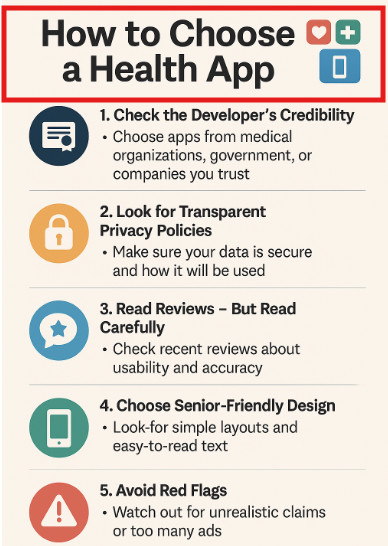
Safety, Privacy, and Data Concerns When Using Health Apps.
This section walks you through the key safety and security concerns seniors nd caregivers should consider before downloading or using a health app.
Personal Information Collected by Health Apps.
Chronic disease management apps typically ask for personal or medical information such as:
- Your name, age, and gender.
- Medications you are taking.
- Daily symptoms or mood logs.
- Blood sugar, blood pressure, or heart rate readings.
- Location data or emergency contacts in some apps.
This data helps tailor your experience, but be cautious about how they store and share this information.
How to Choose a Safe and Private Health App?
Look for apps that:
- Tell you exactly how it uses and shares your data with third parties.
- Choose apps created by hospitals, universities, or well-known health organizations.
- Avoid apps that push ads or require unnecessary permissions.
- Stick to the Apple App Store or Google Play Store to avoid fakes or malware.
- Read reviews before downloading.
Related Content: Top Wearable Devices for Monitoring Senior Health.
Tips for Seniors New to Using Health Apps.
This section offers practical tips to help you, or a loved one, get started confidently and safely.
Start With One App at a Time – Choose one app that addresses your most urgent need, such as tracking your blood pressure or remembering medications, instead of downloading several tools at once.
Adjust your settings for comfort and accessibility – Most modern health apps allow you to customize the layout to increase font size for easier reading, turn on voice instructions if available, or use dark mode to reduce eye strain at night.
Ask for help during setup – You can ask a family member, friend, or caregiver to assist with downloading and installing the app, creating an account, setting up reminders, or learning how to enter and check health data.
Reminders to stay consistent – Most chronic disease apps include reminder notifications to help you take your medication on time, log your daily symptoms, and monitor your blood pressure or blood sugar.
Conclusion: Small Tools With Big Impact.
Managing chronic conditions shouldn’t overwhelm you if you use the right health apps from the comfort of your home.
From medication reminders and symptom tracking to telehealth check-ins and diet logs, these tools empower you to effectively monitor your health daily, but they can’t replace your medical care.
Many of them are simple, affordable, and you don’t need to be tech-savvy to get the most out of yours.
- Choose one app that fits your health needs, medication, blood pressure, or symptoms.
- Ask a caregiver or family member to help you get started.
- Bookmark this guide or share it with someone who needs it.
- And join our free tech newsletter to get senior-friendly tips on using health tools, apps, and more.
